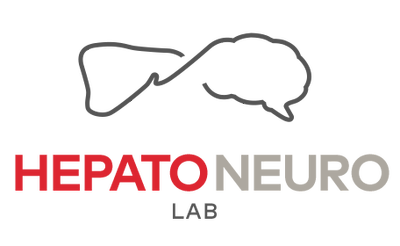Background: The liver plays a major role in regulating ammonia levels in the blood. Therefore, in liver disease, the loss of hepatic function leads to hyperammonemia and consequently hepatic encephalopathy (HE). Ammonia-lowering strategies remain the mainstay therapeutic strategy for HE. Ammonia, both as an ion (NH4+) and gas (NH3), readily crosses all plasma membranes, including the blood-brain barrier (BBB): the interface between the blood and the brain. Since ammonia is a natural toxin, we hypothesize endothelial cells of the BBB have the capacity to metabolize ammonia to protect the brain from ammonia toxicity. Glutamine synthetase (GS), is an enzyme which in the process of amidating glutamate to glutamine removes ammonia is expressed in liver, muscle and brain (primarily in astrocytes) but has never been thoroughly explored in the BBB. The aim of this study was to assess the presence of GS in endothelial cells of the BBB. Methods: Using brain primary microvascular endothelial cells (ECs) and isolated cerebral microvessels (CMV) from the frontal cortex of naïve rats, we assessed GS’s activity and mRNA and protein expression of GS by rtPCR and western blot (brain used as positive control). We also assessed GS expression in brain slices of naïve rats by immunofluorescence (co-localized with endothelial cell marker caveolin-1). In addition, to understand the effect of liver disease on GS, we exposed ECs to plasma from bile-duct ligated (BDL) rats (model of chronic liver disease) and sham-operated controls , as well as 1mM of ammonia chloride and 10μM of hydrogen peroxide as oxidative stress. Results: In vitro ECs and in vivo CMVs both expressed GS mRNA, protein and activity. Immunofluorescence showed GS colocalized with caveolin-1, further proving the presence of GS in endothelial cells of the BBB. The treatment with ammonia increased the activity of GS, while treatment with oxidative stress reduced its activity (p<0.05). ECs exposed to plasma from BDL rats reduced GS activity and protein expression compared with plasma from sham controls (p<0.01). Conclusion: These results demonstrate for the first time that GS is present in ECs in both in vivo and in vitro. Interestingly, ammonia stimulates GS in endothelial cells, whereas oxidative stress inhibits GS activity. Furthermore, GS activity is decreased in the presence of plasma from cirrhotic rats, possibly due to the presence of systemic oxidative stress in BDL rats. We speculate that downregulation of GS allows for faster and easier entry of ammonia into the brain and therefore may increase the risk of HE. We anticipate that upregulating GS in ECs of the BBB could become a new therapeutic target for HE.

